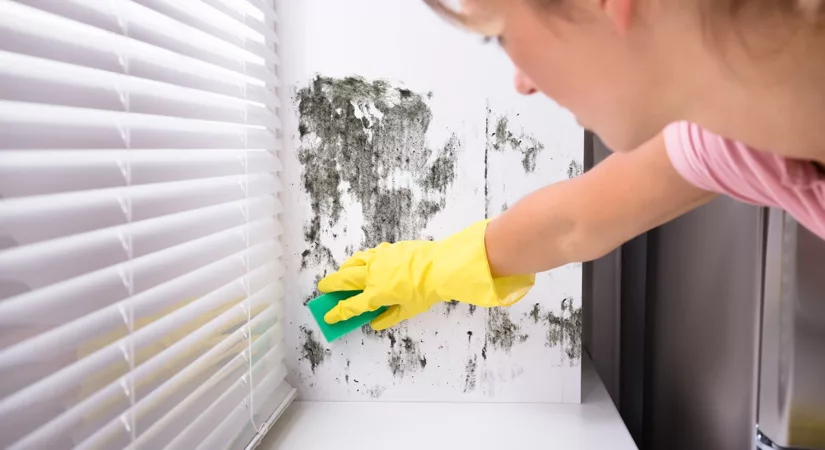Did you know that humidity can affect your home’s interior paint? When moisture levels are too high in your house, this can cause damage to your paint, and without proper intervention it could cause costly damage to your home. In this guide, we will list common signs of humidity damage to interior paint and provide some tips for how to prevent and fix the problem to keep your home looking its best.
Signs of Humidity Damage to Interior Paint
First things first – what is humidity damage? Humidity is the amount of water vapor present in the air, which can change depending on the temperature, weather conditions, and a number of other factors that cause moisture levels to go up or down.
Whether you live in an area that is prone to high humidity or not, without proper ventilation this moisture can become trapped inside your home and can cause damage to your paint over time.
Some of the most common signs of moisture damage to a home’s interior paint include:
- Blistering
- Cracking
- Flaking or chipping
- Dark spots, blotches, or streaks
- Strange slime or textured substance
- Dampness
- Softness (like rotting wood)
Read on for a more in-depth overview of how to spot the signs of humidity damage to interior paint and how to fix it.
Brown Streaks or Spots on Paint
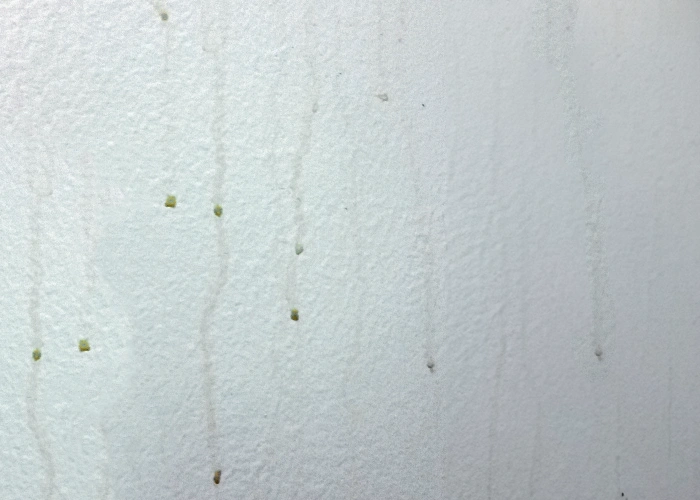
One of the most telltale signs of humidity damage to your paint is the appearance of brown streaks or spots, also known as surfactant leaching. When there is too much moisture in the air, dark brown marks on your home’s walls can indicate surfactant leaching. This usually happens if the humidity is too high before a fresh paint job has the chance to settle in properly.
Peeling or Bubbling Paint
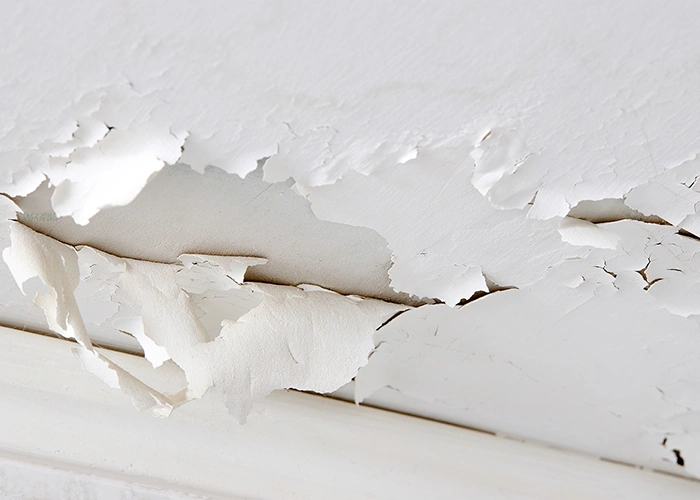
If your paint is peeling or bubbling, also known as paint blistering, there’s likely excessive moisture in your home that’s causing the paint to lose surface adhesion. This basically means that too much water vapor is getting trapped beneath the paint, which causes the paint to lift from the surface.
Adhesion loss will cause visible damage to the paint on your walls. This paint will need to be fully removed and the room dehumidified before a new coat of paint can be successfully applied.
Mold and Mildew
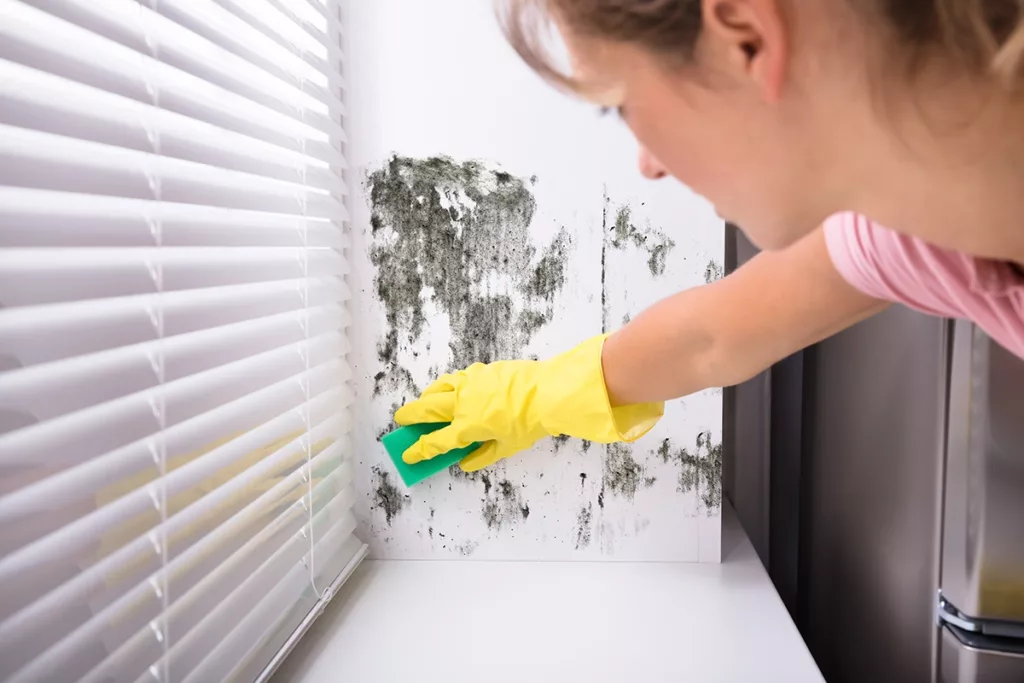
Mold and mildew are common and serious signs of humidity damage that you should never ignore. When humidity levels are high but there isn’t enough ventilation for moisture to escape a room, this can cause mold and mildew to grow.
How to identify mold vs mildew on painted surfaces:
- Mold is a fungus that often looks like dark spots on your paint. Mold exposure in the home can cause a lot of health issues, so it’s a problem that should be addressed in a timely manner. It’s usually slimy, fuzzy, and textured, and comes in a wide variety of colors.
- Mildew is a form of early-stage mold that’s commonly found on surfaces like your walls, ceiling, or windowsills. Mildew is usually gray or white with a flat, powdery texture. While mold usually looks more spotted, mildew will almost look like a thin coat of blotchy paint.
Can You Just Paint Over Mold?
If you believe there is mold or mildew in your home, it will need to be professionally removed before any new painting can be done. Simply painting over mold only covers up the issue for the time being, and the damage to your walls will become even worse and more costly over time. Some removal processes even require drywall to be replaced to fully eradicate mold infestation.
Apply a Moisture and Mold-Resistant Paint Primer
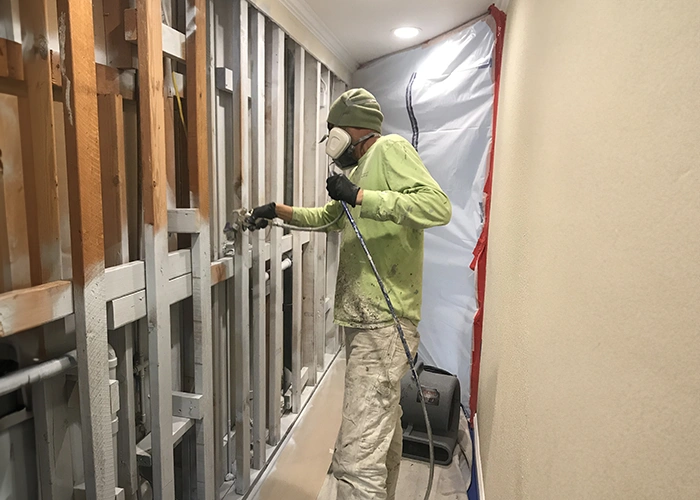
Once the space is repaired, a professional home painting company will apply a high-quality, moisture and mold-resistant primer to the entire surface area and the interior framing of your walls. This primer isn’t going to kill existing mold, but it will prevent any future growth and provide the perfect surface for them to repaint your walls.
Tips for Preventing Humidity Damage to Interior Paint
There are lots of things you can do to prevent humidity from damaging your interior paint including:
- Make sure your home has proper ventilation
- Use dehumidifiers to remove moisture from the air
- Open windows regularly for added ventilation
- Use bathroom fans and crack a window when showering
- Make sure your kitchen has proper venation
- Use air conditioning and replace filters
- Use high-gloss paint in high-moisture areas of your home
How to Fix Humidity Damaged Wall Paint
If your interior paint has humidity damage, the first step is to tackle the source of the excess moisture in your home. After the cause has been addressed, the next thing you will need to do is have any damage repaired and all mold professionally removed. Before having the space repainted, you will also want to make sure to choose a paint finish that has the best level of surface durability.
In naturally high moisture rooms in your home, like your kitchen or bathrooms, high-gloss and semi-high gloss paint finishes are your best options for combating humidity damage. These types of paint finishes are incredibly durable and naturally mildew resistant as well. One you have settled on the perfect paint, working with a professional painting company will help ensure your home’s interior remains looking its best for years to come.
Your Trusted Residential Painters in Sonoma County
Too much humidity in the air can cause moisture damage to your interior paint, and costly damage to your home if the issue isn’t properly taken care of. By keeping an eye out for the signs of moisture damage and working with trusted residential painters, you can completely restore your home’s interior to perfect condition.
To request a FREE painting estimate, contact us today by submitting an online contact form or giving us a call at (707) 792-0773.

